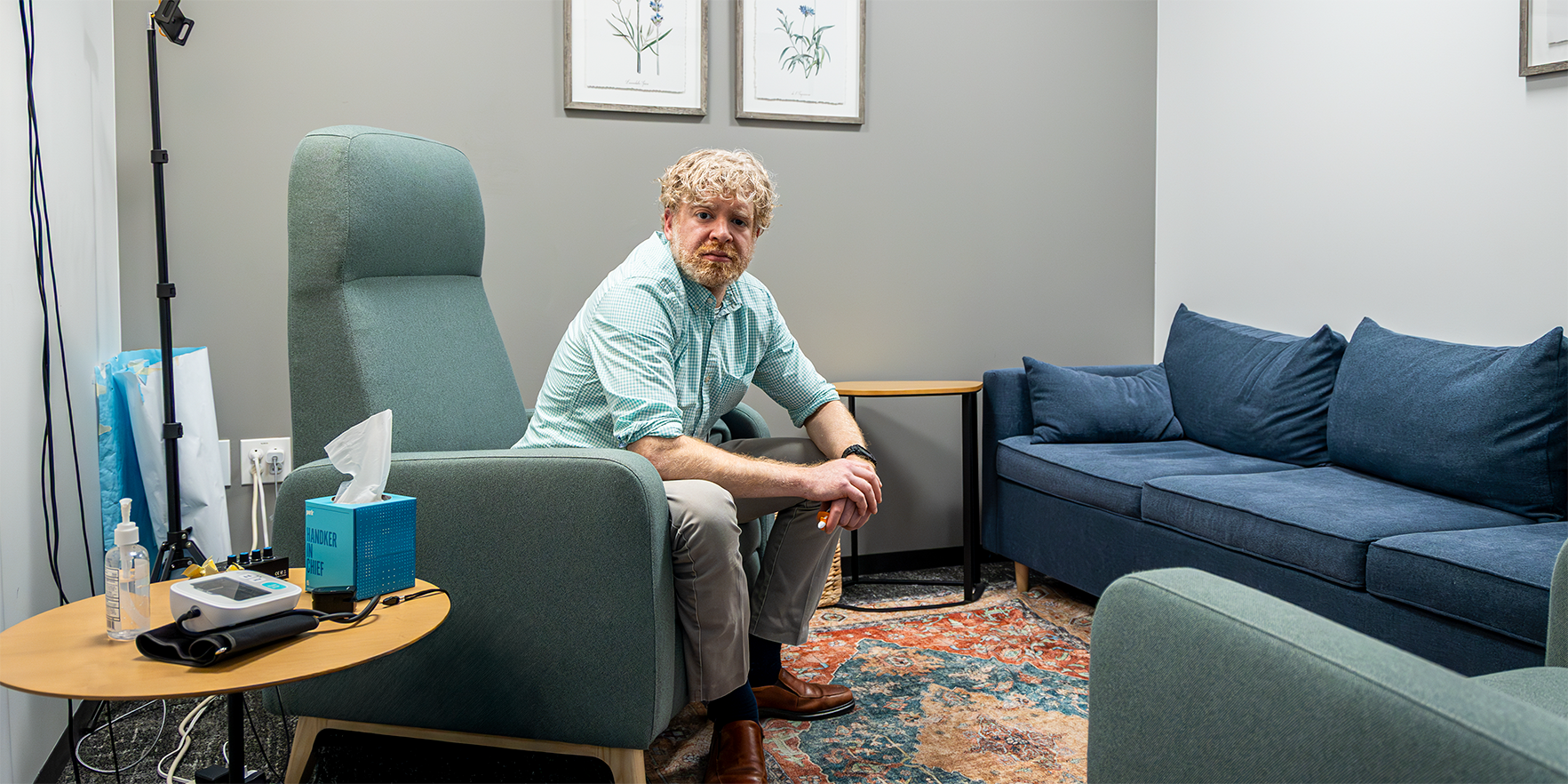How do you decide who could benefit from Inspire?
Inspire is an option for some patients who have moderate or severe sleep apnea, with a number of parameters set by the FDA (Food and Drug Administration) for qualification, including a body mass index (BMI) limit. If you are obese, and we think that weight is a contributing factor to your sleep apnea, the likelihood that a surgery like Inspire is going to improve that sleep apnea is very low.
A big portion of surgical evaluation is taking into account where in the throat the muscles are collapsing. We know that all surgeries, Inspire included, stimulate and affect the muscles of the throat in different ways. So part of the surgical evaluation at our center is a procedure called the drug-induced sleep endoscopy, where we’re looking at the airway with a camera to see the areas that are causing blockage in your airway.
It’s about a 30-minute surgical procedure that’s done in the operating room under a very low dose of sedation. We hear snoring, and we see what your typical breathing pattern is during sleep, and we are able to sneak that camera in to take a peek at what’s going on with the muscles while you are sleeping.
How many Inspire implants have you done?
I’ve done close to 200 implants here at UCHealth University of Colorado Hospital, and my partner has done about 100. Inspire is the only device that is currently FDA-approved in the United States for hypoglossal nerve stimulation, or upper-airway nerve stimulation. There are several other devices that are in various stages of clinical trials in the United States currently, and I anticipate that in the next several years, there may be additional devices on the market.
How does it work?
A generator that serves as the battery and the brains of the device is implanted along with two wires. One wire gets implanted deep in the neck directly around the nerve that controls the tongue; that’s the hypoglossal nerve. The other wire gets implanted in between the muscles of the rib cage, and that’s what’s used to sense when the body is breathing in versus when the body is breathing out.
Patients have a remote control, and you turn on therapy when you are ready to go to sleep. There’s a little delay between when you turn the device on and when the therapy comes on and starts moving your tongue to let you fall asleep. Once you’re sleeping, the device is sensing your breathing, and every time you take a breath in, it sends a signal to the nerve and pulls the tongue forward so that your tongue is moving with every single breath you take (Green demonstrates by sticking her tongue out and in two times).
So people can see and feel their tongues moving in and out?
If you are awake during therapy, it’s a palpable and visible movement of the tongue. Certainly a large percentage of patients tolerate the therapy, but it is something that you have to be able to comfortably use. That is a potential barrier. If you are awake in the middle of the night, you will feel your tongue moving.
Wouldn’t that possibly keep them awake?
It can. It’s also a risk. In our center, our two sleep surgeons are also board-certified sleep medicine physicians, and there are a lot of nuances that go into the discussion of different options. It’s important to recognize that if you have other underlying sleep disruptions – if you have severe insomnia, chronic pain that keeps you up at night, or severe restless legs for example – there is a higher likelihood that Inspire might not be a therapy that is comfortable for you.
Does it hurt?
It does not hurt. It’s a question that I get asked a lot: Does it feel like an electrical shock? Do you get a zing? It feels like your tongue is moving, and you’re not the one moving it. But because the hypoglossal nerve is purely a motor nerve, it’s not a sensory nerve, it is not a painful stimulation.
What is the success rate?
If you are a good candidate for the procedure, about 70% to 80% of patients will get significant improvement, where we see moderate to severe sleep apnea improve down to at least a mild range. About a third of patients can achieve full control of their sleep apnea with Inspire. That’s where it’s important to recognize that it’s not a fair comparison to CPAP.
If you can wear a CPAP, your sleep apnea is 100% treated. So I’m never going to tell patients that Inspire is as good as a CPAP machine at treating their sleep apnea. But I think for those 30% who can’t wear CPAP, it’s not really a fair comparison, because they can’t wear that CPAP. So really at that point we are comparing Inspire to their untreated sleep apnea. I think if we have a 70% to 80% chance of treating those events significantly, then the risks of surgery and the risk of having an implant that come along with it are outweighed by the benefits.
And it is also less invasive than other surgical options, correct?
As a surgeon, I always tell people any surgery can have complications. But on the spectrum of surgeries, I think Inspire is a relatively easier surgery to recover from, especially compared to the more traditional upper-airway surgeries, such as palate or tongue surgery. Those are pretty big, and generally very painful, recoveries.
Inspire is generally outpatient surgery, so you go home the same day. Most of my patients require very minimal pain medication after surgery; the majority use over-the-counter Tylenol or ibuprofen. Incisions are pretty small. There is usually about a 4-centimeter incision on the neck and about a 4- to 5-centimerter incision on the front of the chest. We’re able to put in all three components through those two incisions. Most people are back to normal activities within a couple of days.
Does it stop snoring?
It can. And oftentimes, it does. What I always tell patients is snoring and sleep apnea are associated, but it is possible to snore and not have sleep apnea. If Inspire is effective, most patients also notice a significant reduction in the severity and intensity of their snoring.
Is it covered by insurance?
The vast majority of the time, as long as all of those FDA criteria are met, commercial insurances as well as Medicare do cover Inspire. As someone who has been implanting for seven or eight years now, the process of insurance authorization has really become much more streamlined than it was at the beginning. Most commercial insurance companies now have policies in place.





